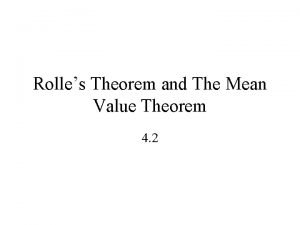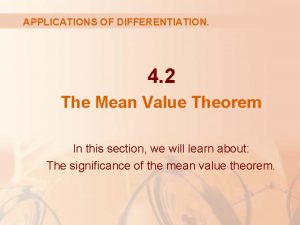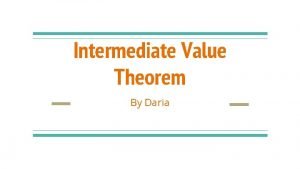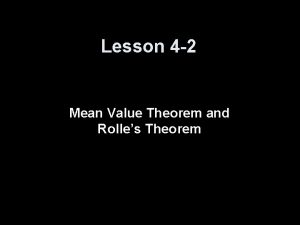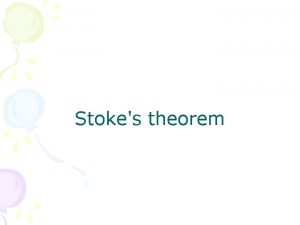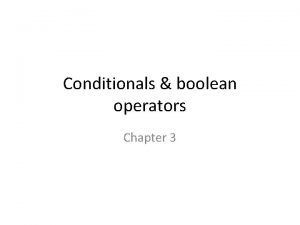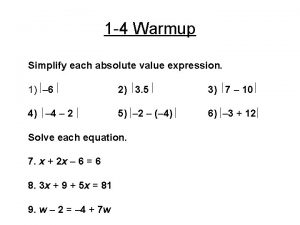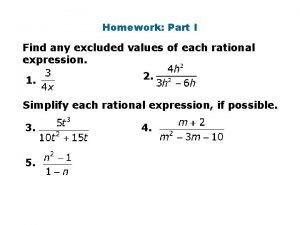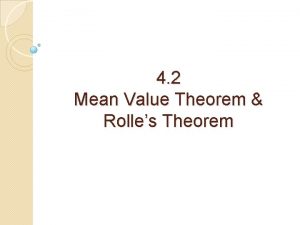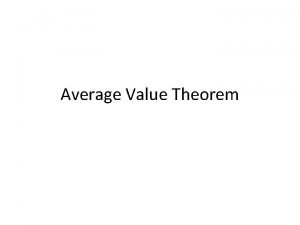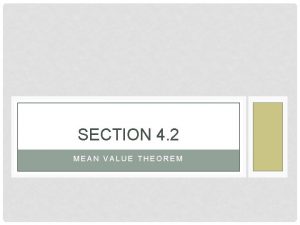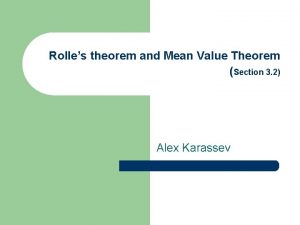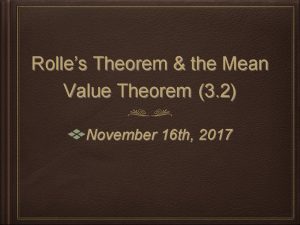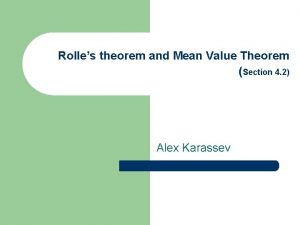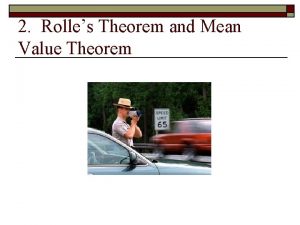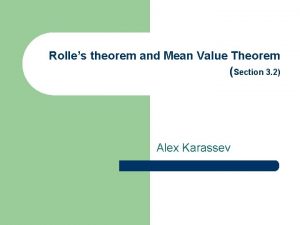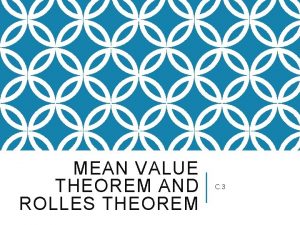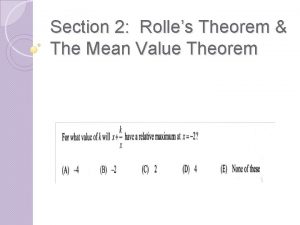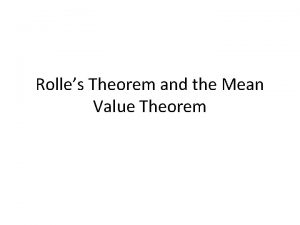MEAN VALUE THEOREM MEAN VALUE THEOREM The expression






![Verify Lagrange’s mean value theorem for the function f(x)=(x-3)(x-6)(x-9) on the interval [3, 5]. Verify Lagrange’s mean value theorem for the function f(x)=(x-3)(x-6)(x-9) on the interval [3, 5].](https://slidetodoc.com/presentation_image_h2/6e2e5907b479173f024fb986d10319f0/image-7.jpg)






- Slides: 13

MEAN VALUE THEOREM

MEAN VALUE THEOREM �

The expression (f(b) − f(a)) / (b − a) gives the slope of the line joining the points (a, f(a)) and (b, f(b)), which is a chord of the graph of f, while f′(x) gives the slope of the tangent to the curve at the point (x, f(x)). Thus the Mean value theorem says that given any chord of a smooth curve, we can find a point lying between the end-points of the chord such that the tangent at that point is parallel to the chord.


Geometrical Interpretation �

Working Rule �
![Verify Lagranges mean value theorem for the function fxx3x6x9 on the interval 3 5 Verify Lagrange’s mean value theorem for the function f(x)=(x-3)(x-6)(x-9) on the interval [3, 5].](https://slidetodoc.com/presentation_image_h2/6e2e5907b479173f024fb986d10319f0/image-7.jpg)
Verify Lagrange’s mean value theorem for the function f(x)=(x-3)(x-6)(x-9) on the interval [3, 5]. �

Verify Lagrange’s mean value theorem for the following function on the indicated intervals. Also, find a point c in the indicated interval. F(x)=x(x-2) on [1, 3] �

Verify Lagrange’s mean value theorem for the following function on the indicated intervals. Also, find a point c in the indicated interval. f(x) = x (x-1) (x-2) on interval [0, ½] �


� Exercise 1. Show that the equation 2 x 3 + 3 x 2 + 6 x + 1 = 0 has exactly one real root. � Answer. � Let f(x) = 2 x 3 + 3 x 2 + 6 x + 1. We have f(0)=1 and f(-1) = -4. So the Intermediate Value Theorem shows that there exists a point c between -1 and 0 such that f(c) =0. Consequently our equation has at least one real root. � Let us now show that this equation has also at most one real root. Assume not, then there must exist at least two roots c 1 and c 2, with c 1 < c 2. Then we have f(c 1) =0 and f(c 2) =0. Rolle's Theorem implies the existence of a point c between c 1 and c 2 such that � f'’(c) = 6 c 2 + 6 c + 6 =0. � � But the quadratic equation 6 c 2 + 6 c + 6 =0 does not have real roots, yielding a contradiction to our assumption that f(x) had at least two roots. Conclusion: our original equation has exactly one real root.


Exercise �
 Quadratic equation examples
Quadratic equation examples Greenes theorem
Greenes theorem Mean value theorem
Mean value theorem Mean value theorem example
Mean value theorem example Rolles theorem khan academy
Rolles theorem khan academy Rolls theorem
Rolls theorem Contoh value creation
Contoh value creation Stokes theorem physical significance
Stokes theorem physical significance It reverses the value of a boolean expression
It reverses the value of a boolean expression Absolute value warm up
Absolute value warm up 7-4 properties of logarithms
7-4 properties of logarithms Excluded values
Excluded values Hát kết hợp bộ gõ cơ thể
Hát kết hợp bộ gõ cơ thể Ng-html
Ng-html


